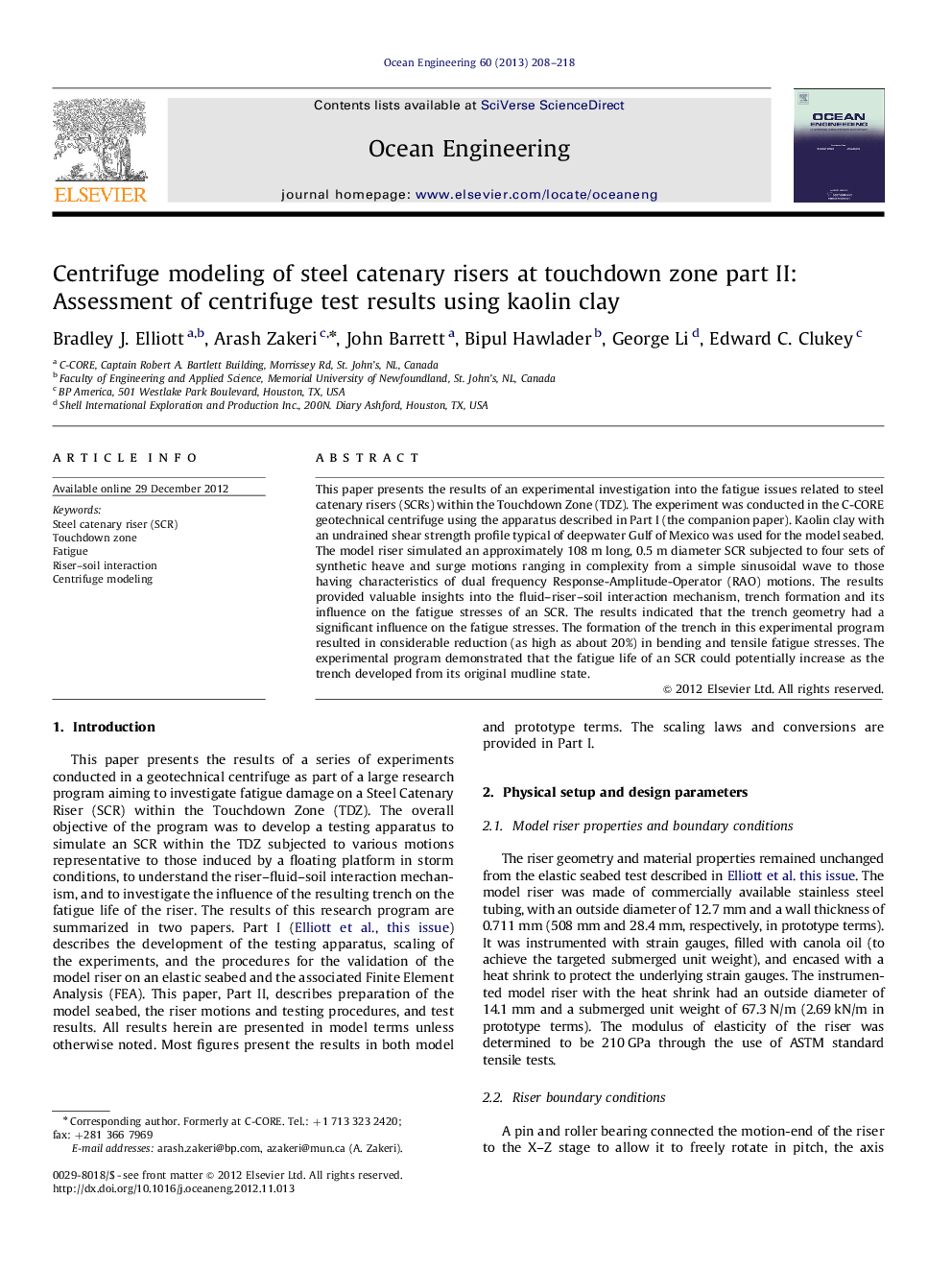| Article ID | Journal | Published Year | Pages | File Type |
|---|---|---|---|---|
| 1726025 | Ocean Engineering | 2013 | 11 Pages |
This paper presents the results of an experimental investigation into the fatigue issues related to steel catenary risers (SCRs) within the Touchdown Zone (TDZ). The experiment was conducted in the C-CORE geotechnical centrifuge using the apparatus described in Part I (the companion paper). Kaolin clay with an undrained shear strength profile typical of deepwater Gulf of Mexico was used for the model seabed. The model riser simulated an approximately 108 m long, 0.5 m diameter SCR subjected to four sets of synthetic heave and surge motions ranging in complexity from a simple sinusoidal wave to those having characteristics of dual frequency Response-Amplitude-Operator (RAO) motions. The results provided valuable insights into the fluid–riser–soil interaction mechanism, trench formation and its influence on the fatigue stresses of an SCR. The results indicated that the trench geometry had a significant influence on the fatigue stresses. The formation of the trench in this experimental program resulted in considerable reduction (as high as about 20%) in bending and tensile fatigue stresses. The experimental program demonstrated that the fatigue life of an SCR could potentially increase as the trench developed from its original mudline state.
► Simulated 108 m long, 0.5 m diameter, Steel Catenary Riser in a geotechnical centrifuge. ► Subjected model riser to four sets of complex motions in the heave and surge direction. ► Recorded bending moments, tensions, shear strength, pore pressures and trench formation. ► Demonstrated that the fatigue life of an SCR increases as the trench deepens. ► The fatigue stresses decreased by about 20% as the trench deepened.
